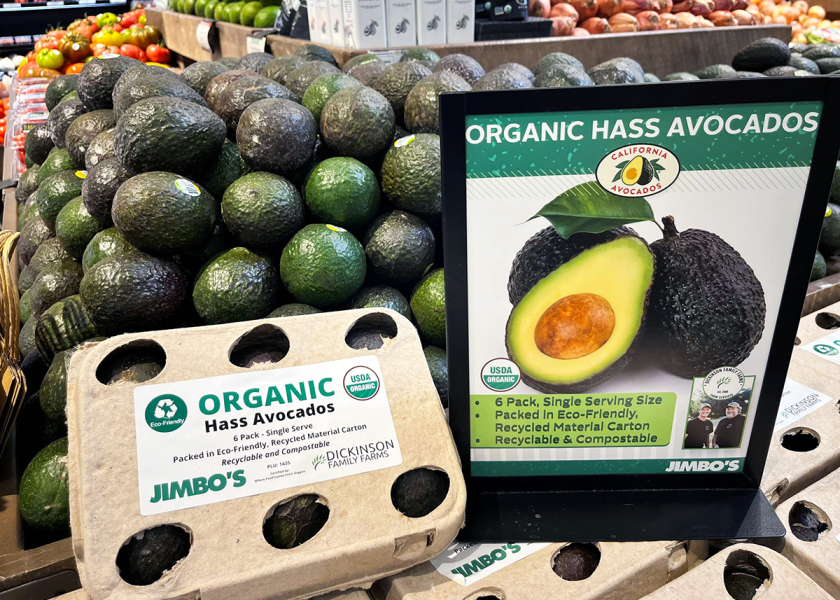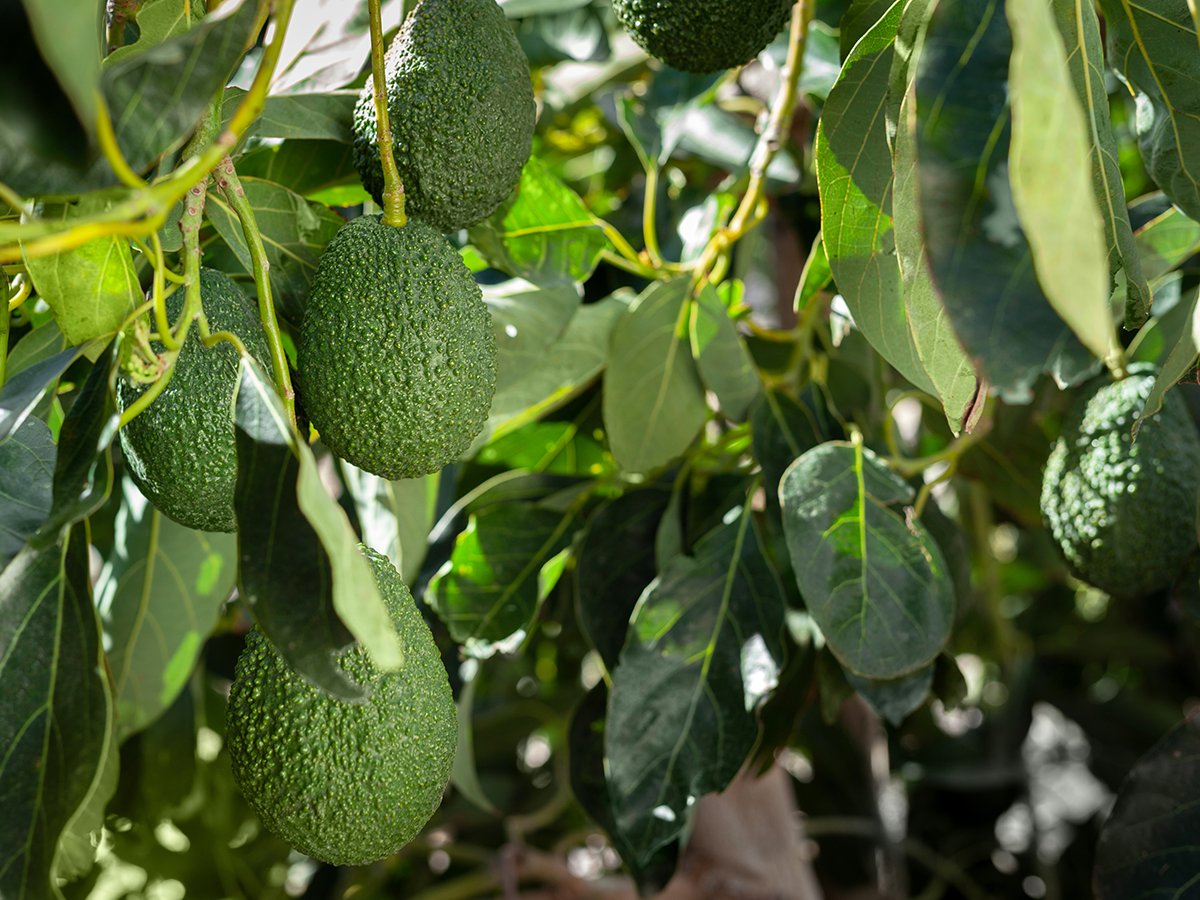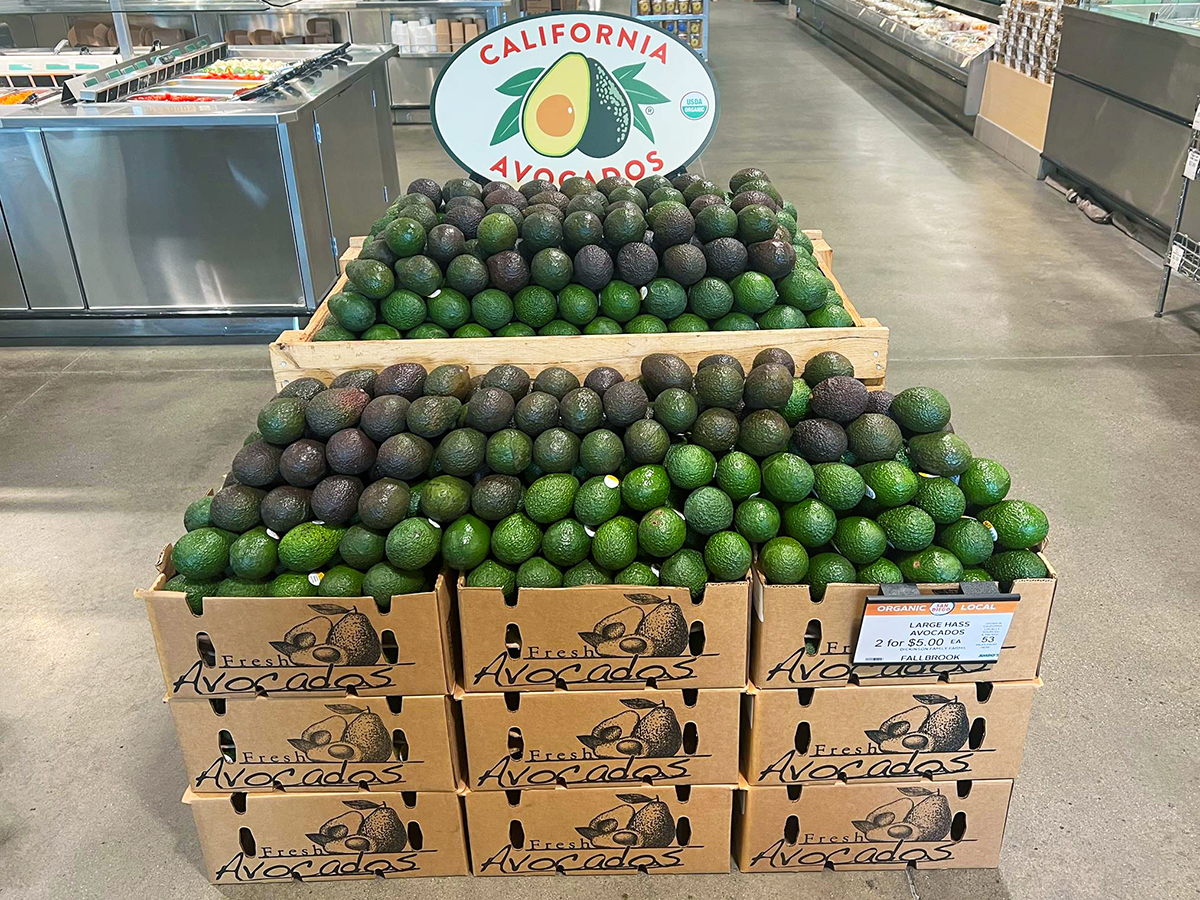With harvest on the horizon, California avocados will soon be ready for retail

The California Avocado Commission estimates that the state will produce 208 million pounds of avocados during the 2024 season, which is just kicking off.
This is down slightly from last year’s 237 million pounds, likely due to significant rain during an El Niño year, which has slightly delayed the season.
“After all this rain, what is needed is warm days to help the avocados on the trees to grow and for the set the following year,” said Terry Splane, vice president of marketing for the commission.
California has more than 50,000 acres of avocado fields, and it grows more avocados than any other state; 95% of which are hass avocados, followed by lamb hass and Gem.
This year’s harvest is “right on track,” says John Dmytriw, vice president of business development for Index Fresh, Corona, Calif.
While the rain helps with the health of trees, he said, it also has led to a slightly slower start to the season. “But we’ll be gaining steam through April and May; June and July will be the peak months.”
Early in the season Index Fresh picks various sizes of avocado, though focuses more on the smaller ones to allow other fruits to grow.
“The tree is the perfect incubator,” Dmytriw said.
Hass avocados constitute 99% of the avocados U.S. consumers eat, followed by Gems, Dmytriw said. The Gem is slowly gaining acreage and sales because some retailers “want to provide something different and offer choices for their customers,” he said.
Santa Paula, Calif.-based Calavo expects to see its harvest volumes peak in April, May and June, starting with 48 size and smaller, then getting larger as the season progresses. The grower offers hass, Gem and lamb hass.

Retail popularity
Avocado sales are strong at Jimbo’s, a four-store company in San Diego County, said Ryan Peterson, vice president of produce and floral.
Hass is the staple variety and bestseller, but Reed and Gem varieties are gaining popularity. In early March the stores transition to California products from Mexican-sourced product in the winter. Customers anticipate local avocados, Peterson said.
Jimbo’s likes to carry avocados of different ripeness to meet the varied needs of customers, and it’s important to always have them, Peterson said. Otherwise, “they’ll look for a store with them readily available. If they know they can get ripe avocados that day, it increases sales storewide because it brings people in.”
Avocados are one of the most consistent items for sales throughout the year, says Chris Miller, produce director for Rockville, Md.-based Mom’s Organic Produce, which has 24 stores.
Most California avocados are hass, and Miller sells ready-to-eat and firmer avocados; he said he tries to educate consumers that offering firmer fruit allows the store to reduce food waste while allowing the fruit to ripen at home to suit a consumer’s needs.
Organically speaking
Demand for organic avocados is up, says Peter Shore, vice president of product management at Calavo.
“We’re seeing continued, double-digit growth year-over-year in our organic business,” said Dmytriw of Index Fresh. “A lot of growers have converted groves and acreage over to organics but we’re now seeing the fruits of their labors. It’s still something high on most retailers’ lists.”
Overall, according to data from Circana, organic avocado retail sales have increased at a faster rate than conventional across the U.S. over the past four years. The volume of organic avocados grew 49%, while conventional sales increased 17%. Organic avocados now constitute 5.4% of the volume in California, and sales have increased 28.7% in the state over the past four years.

Bulk and bagged
Consumers are purchasing both bulk and bagged avocados, with significant growth in bagged fruit. The California Avocado Commission’s 2023 avocado tracking study indicated that 45% of avocado shoppers in the U.S. prefer bulk avocados and 31% prefer to buy them in bags, with the remainder saying they have no or varying preferences.
Jimbo’s has partnered with a local grower, Dickinson Family Farms, to create an eco-friendly compostable pack to hold six small avocados.
“It gives us a good avenue to sell this size and pass on a deal to our customer,” said Peterson, adding that the store is avoiding plastic netted bags. “This is a good deal for shoppers, and we market the avocados as single-serve since they’re smaller. This is a good way to buy a week’s worth of avocado.”
The container can be composted at home, he said.
Most avocados sold at Mom’s Organic Market stores are in bulk because consumers like to feel them, but the chain also offers a four-pack of small avocados in a compostable package.
“The smaller sizes are not as palatable to our consumer base, but if we can offer them in a compostable four-pack that allows the growers to market their fruit and allows us to offer a product that suits lifestyle, it works for everyone,” Miller said.
In California, 39% of grocery shoppers buy bagged avocados.
“This trend is a huge benefit to retailers as bagged avocados increase market basket value by an average of 107%,” said Splane of the California Avocado Commission.
Bags “have become a no brainer because they’ve gained so much traction,” says Index Fresh’s Dmytriw. Many retailers, he points out, say consumers want to select their own avocados, but the convenience factor of bags is pushing packaged sales. It’s important to include only high-quality fruit in the bags, he points out. “Customers are having a positive experience with that purchase so the level of trust is going up.”
Calavo’s bags are popular, containing sizes that include 40, 48, 60, 70 and 84 with four to seven avocados per bag.
“We’re even bagging 32s and 36s in our Grande bags,” Shore said. All bags have storage and handling tips as well as recipe ideas and menu suggestion.
Oxnard, Calif.-based Mission Produce sells Jumbos and Minis bags and slightly blemished, mixed-size avocados packed in value packs, known as Emeralds in the Rough. These bags “[aim] to combat food waste by finding a home for less-than-perfect fruit, appealing to the 95% of consumers [who] feel it’s important to do their part to reduce food waste,” said Brooke Becker, vice president of sales.
Merchandising
The California Avocado Commission is launching a consumer advertising campaign focusing on what differentiates California avocados. It includes messaging about sustainability, locally grown and local growers.
Index Fresh provides POS materials to stores, including grower bios and information about Gem avocados. The company also uses QR codes on packaging to give consumers information on avocados and what to do with them.
But what really helps in these days of artificial intelligence “is when consumers can see the person who runs the grove and they want to support them,” Dmytriw said.
Jimbo’s merchandises its avocados with its tomato sets “and we try to make sure they’re in a high foot-traffic area,” Peterson said. “Our avocado category is only second to strawberries in sales year-round.”
He also creates satellite displays to drive sales, especially when avocados are on sale or there are major sporting events. Signage with the avocados spotlights local growers, and the stores feature the California Avocado Commission’s “Hand Grown in California” sticker.
And the stores run promotions, especially around sporting events and particularly with packaged avocados, “because it helps maintain a large basket ring,” Peterson said.
He also promotes California avocados through social media, primarily on Instagram. He’ll highlight the different
varieties and let customers know when they’re coming into season.








